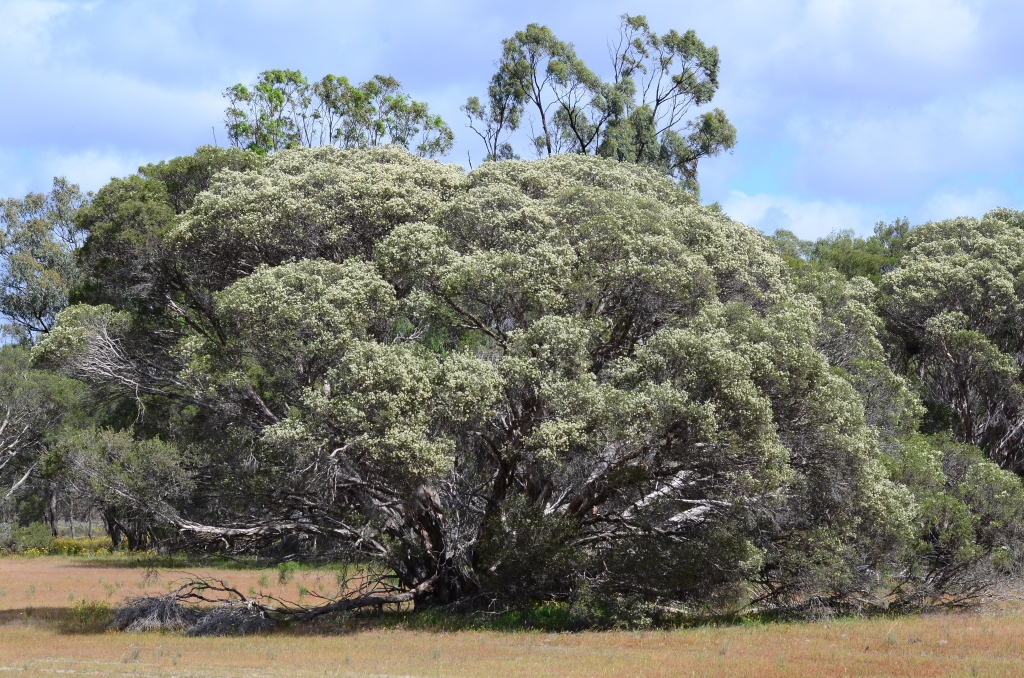Melaleuca halmaturorum
F.Muell. ex Miq.Shrub or small tree to 7 m high, glabrous except for young growth and occasional scattered hairs; bark pale, papery. Leaves decussate, linear-lanceolate to narrowly oblanceolate, 3–7 mm long, 1–2 mm wide, obtuse, distinctly gland-dotted at least below, veins obscure; petiole c. 1 mm long. Inflorescence a short terminal head, consisting of clusters 8–13 mm wide, each of 2–5 flowers on a short bracteate stalk, each flower with bracts and, generally, bracteoles; axis glabrous, growing on into a leafy shoot; sepals narrowly triangular, pointed, semi-persistent; stamens 5–12 per bundle, white, claw 1.5–2 mm long, free part of filaments 3–5 mm long. Capsules cup-shaped, 3–4 mm long and wide in short spikes and leafy lateral clusters. Flowers spring.
LoM, MuM, Wim, GleP, VVP, VRiv, MuF, WaP, CVU, GGr, DunT. Also WA and SA. In Victoria mostly fringing salt lakes in the north-west (where becoming rare), with an isolated near-coastal occurrence on saline ground at Tyrendarra, near Portland.
Plants in Western Australia were previously treated as distinct subspecies, Melaleuca halmaturorum subsp. cymbifolia (Benth.) Barlow.
 Spinning
Spinning

